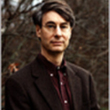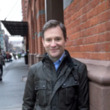My Age of Anxiety: Fear, Hope, Dread, and the Search for Peace of Mind
(Libby/OverDrive eAudiobook)
Available Platforms
Description
More Details
Excerpt
Similar Titles From NoveList
Similar Authors From NoveList
Published Reviews
Choice Review
Stossel (editor of The Atlantic and a freelance writer) takes an interesting approach to describing anxiety disorders. As a magazine editor and journalist, he did copious research for the book, revealing numerous facts most readers are not likely to know about various kinds of anxiety. However, he departs from a purely objective, dispassionate account of anxiety disorders by boldly revealing his own battle with panic disorder and specific phobias. In an unflinching way that truly compels one to keep reading, Stossel shares the story of his lifelong struggles with anxiety in its various manifestations, along with that of his family members and notable personalities. In doing so, he helps readers gain deeper insight into the phenomenology of such disorders in a fashion similar to that of Peter Kramer, who shared the world of psychiatry from his perspective after the advent of Prozac. Thus, the book engenders empathy for the author and all who experience such disorders. It further helps readers question the nature of anxiety on both a philosophical and a lived level. Summing Up: Recommended. Upper-division undergraduates; professionals; general readers. A. L. Bizub Elmira College
Booklist Review
*Starred Review* Stossel, editor of the Atlantic magazine, is a very nervous man trying awfully hard not to be. I have since the age of about two been a twitchy bundle of phobias, fears, and neuroses. He suffers from lots of physical symptoms and a panoply of phobias (most notably, a fear of vomiting). I'm like Woody Allen trapped in John Calvin, he confesses. Psychotherapy, multiple medications, and alcohol provide incomplete relief. He ponders the possible causes of panic attacks and anxiety: a strong genetic component, environmental influences, and childhood upbringing. He wonders whether anxiety is purely a psychological problem or something else a medical disease, spiritual disorder, cultural phenomenon, or evolutionary survival mechanism. For a layperson, he has considerable knowledge about prescription anti-anxiety drugs (perhaps based on three decades of using them). Tying together notions about anxiety culled from history, philosophy, religion, sports, and literature with current neuropsychiatric research and his extensive personal experience, Stossel's book is more than an astounding autobiography, more than an atlas of anxiety. His deft handling of a delicate topic and frustrating illness highlights the existential dread, embarrassment, and desperation associated with severe anxiety yet allows room for resiliency, hope, and transcendence. Absolutely fearless writing.--Miksanek, Tony Copyright 2010 Booklist
Publisher's Weekly Review
Veteran magazine editor Stossel fuses his own account of lifelong chronic anxiety with a medical history of this baffling psychiatric condition that plagues an increasingly larger percentage of the population even as the range of available treatment options has become more varied. Narrator Goldstrom takes great pains to adopt Stossel's journalist/insider identity in his delivery, conveying genuine emotion, but muting his tone enough to keep the production from emphasizing the personal at the expense of the larger scientific and societal issues. Still, Goldstrom's rendering of some of Stossel's autobiographical anecdotes do stand out as dramatic, particularly his therapeutic session to conquer phobia related to vomiting, as well as a panic attack involving a series of misadventures in a guest bathroom at the Kennedy family compound in Hyannis Port, Mass. Goldstrom also does an especially effective job reading the pharmacological and psychological portions of the narrative in a smooth broadcasting style that helps make the material more accessible and engaging. A Knopf hardcover. (Jan.) (c) Copyright PWxyz, LLC. All rights reserved.
Library Journal Review
Offering a candid look at his life as an anxiety patient, Stossel (editor, The Atlantic) reviews the history of anxiety as far back as Galen and Hippocrates, the current treatments, risks and side effects, and neuropsychiatric research. He focuses in this autobiographical work on the biological, cultural, and environmental factors that contribute to debilitating anxiety. Michael Goldstrom presents a steady pace, pleasant voice, and expressive reading of this well-told narrative. verdict This candid and factual discussion of a common yet rarely discussed mental health concern will be of interest to those diagnosed or living with anxiety disorder, self-help readers and biography/memoir fans.-Laurie Selwyn, formerly with -Grayson Cty. Law Lib., Sherman, TX (c) Copyright 2014. Library Journals LLC, a wholly owned subsidiary of Media Source, Inc. No redistribution permitted.
Kirkus Book Review
In this captivating and intimate book, the editor of the Atlantic spares no detail about his lifelong struggle with anxiety and contextualizes his personal experience within the history of anxiety's perception and treatment. According to the National Institute of Mental Health, nearly one in seven Americans currently suffers from some form of anxiety. Stossel (Sarge: The Life and Times of Sergeant Shriver, 2004), whose assorted phobias and neuroses began to manifest when he was a toddler, provides an exceptionally relatable and frequently hilarious account of a modern sufferer: the endless combinations of therapy and drugs, pharmaceutical and otherwise; the inevitable mishaps of a public figure who is terrified of flying, enclosed spaces and speaking in public; the delicate negotiation between managing psychological torment and being a husband and father. Alongside these anecdotes--one of which, involving the Kennedy family, is laugh-out-loud funny--the author explores how anxiety has affected humans for centuries and how there is still no "cure." Instead, anxiety is a "riddle" with very personal and diverse factors and symptoms, and it affects people from all walks of life. Many great minds, including Freud and Darwin, documented their battles with anxiety. They also experimented with chemical interventions, testimony of a long history of sought-after relief from anxiety's debilitating effects. Stossel deftly explores a variety of treatments and their risks and successes, providing unique insight as both a journalist (whose priority is impartial investigation) and sufferer (whose imperative is to feel well). Throughout, the author's beautiful prose and careful research combine to make this book informative, thoughtful and fun to read. Powerful, eye-opening and funny. Pitch-perfect in his storytelling, Stossel reminds us that, in many important ways, to be anxious is to be human.]]]] Copyright Kirkus Reviews, used with permission.
Booklist Reviews
*Starred Review* Stossel, editor of the Atlantic magazine, is a very nervous man trying awfully hard not to be. "I have since the age of about two been a twitchy bundle of phobias, fears, and neuroses." He suffers from lots of physical symptoms and a panoply of phobias (most notably, a fear of vomiting). "I'm like Woody Allen trapped in John Calvin," he confesses. Psychotherapy, multiple medications, and alcohol provide incomplete relief. He ponders the possible causes of panic attacks and anxiety: a strong genetic component, environmental influences, and childhood upbringing. He wonders whether anxiety is purely a psychological problem or something else—a medical disease, spiritual disorder, cultural phenomenon, or evolutionary survival mechanism. For a layperson, he has considerable knowledge about prescription anti-anxiety drugs (perhaps based on three decades of using them). Tying together notions about anxiety culled from history, philosophy, religion, sports, and literature with current neuropsychiatric research and his extensive personal experience, Stossel's book is more than an astounding autobiography, more than an atlas of anxiety. His deft handling of a delicate topic and frustrating illness highlights the existential dread, embarrassment, and desperation associated with severe anxiety yet allows room for resiliency, hope, and transcendence. Absolutely fearless writing. Copyright 2013 Booklist Reviews.
Library Journal Reviews
Now the most commonly acknowledged form of mental illness, anxiety wasn't even a diagnostic category 30 years ago, but even Hippocrates recognized its troublesome signs. Atlantic editor Stossel draws on his own battle with anxiety as he blends historical account with a discussion of anxiety's treatments; biological, cultural, and environmental factors; and blind-siding consequences,
[Page 56]. (c) Copyright 2013. Library Journals LLC, a wholly owned subsidiary of Media Source, Inc. No redistribution permitted.Publishers Weekly Reviews
Stossel, editor of the Atlantic, leads a jittery, searching tour through the most common mental disorder in the world: "a function of biology and philosophy, body and mind, instinct and reason, personality and culture." As an acutely miserable and anxious 10-year old, Stossel began an early journey through various therapies and medications. His experiences with these treatments doubles as an accidental history of how science, psychotherapy, medicine, and the culture at large have attempted deal with anxiety's psychological riddle: persistent fear with no "concrete object" of which to be afraid. Stossel's work features biographical sketches of famous anxiety cases like Charles Darwin and Samuel Johnson, and a rigorous survey of the foundations of anxiety research, from Freud to attachment theory to the "chemical imbalance" model of mental illness, alongside discussions of the biological, neurological, and genetic roots of the condition. Stossel's journey through his own life is unsparing, darkly funny (a nervous stomach tends to flare up at the worst times, like in front of JFK Jr.), but above all, hopeful. As with many sufferers, Stossel's quest to find relief is unfinished, but his book relays a masterful understanding of the condition he and millions of others endure. Agent: the Wylie Agency. (Jan.)
[Page ]. Copyright 2013 PWxyz LLCReviews from GoodReads
Citations
Stossel, S., & Goldstrom, M. (2014). My Age of Anxiety: Fear, Hope, Dread, and the Search for Peace of Mind (Unabridged). Books on Tape.
Chicago / Turabian - Author Date Citation, 17th Edition (style guide)Stossel, Scott and Michael Goldstrom. 2014. My Age of Anxiety: Fear, Hope, Dread, and the Search for Peace of Mind. Books on Tape.
Chicago / Turabian - Humanities (Notes and Bibliography) Citation, 17th Edition (style guide)Stossel, Scott and Michael Goldstrom. My Age of Anxiety: Fear, Hope, Dread, and the Search for Peace of Mind Books on Tape, 2014.
Harvard Citation (style guide)Stossel, S. and Goldstrom, M. (2014). My age of anxiety: fear, hope, dread, and the search for peace of mind. Unabridged Books on Tape.
MLA Citation, 9th Edition (style guide)Stossel, Scott, and Michael Goldstrom. My Age of Anxiety: Fear, Hope, Dread, and the Search for Peace of Mind Unabridged, Books on Tape, 2014.
Copy Details
| Collection | Owned | Available | Number of Holds |
|---|---|---|---|
| Libby | 1 | 1 | 0 |






























